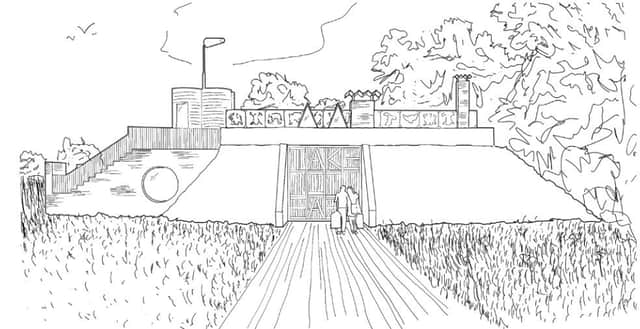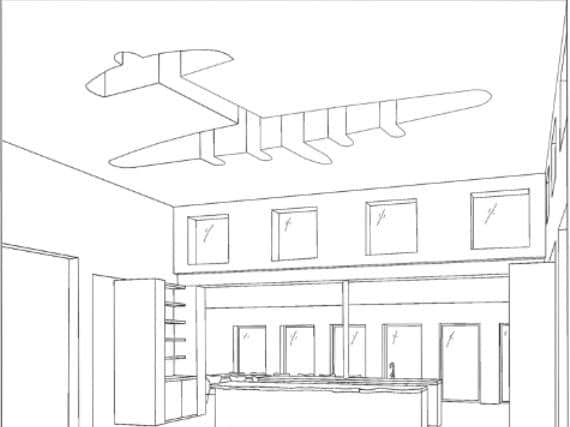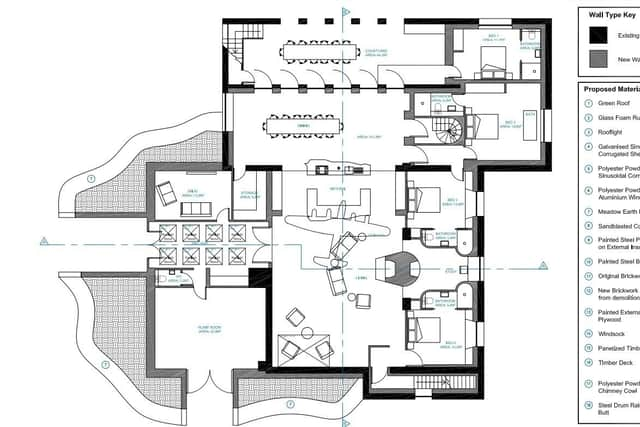Former RAF Spilsby building to be converted into luxury home


The Operations Block on the former RAF Spilsby site, located on Monksthorpe Lane in Great Steeping, is set to be transformed into a dwelling steeped with references to the site’s military history – including a roof-light in the shape of a Lancaster Bomber and the re-instatement of the site’s original windsock and pole.
RAF Spilsby opened in 1943 with 207 Squadron occupying the airfield. The Bombing Squadron relocated in October 1945, and RAF Spilsby was closed in 1946 and used for storage.
Advertisement
Advertisement
Then in June 1955, the site was re-opened and occupied by the US Airforce, who then left in 1958 and the airfield was designated as an emergency landing site for the Avro Vulcan Bombers, based at RAF Scampton.


The runways and perimeter track were torn up and the land sold off as farmland in the late 1970s, and the Operations Block was converted into a hatchery for poultry but ceased to be used in the 1980s and as the building was unable to store farm machinery, has been unused ever since.
A statement from Mat Barnes, director of architects CAN, said: “Without imminent restoration and conversion, the history of the site will be further eroded and ultimately forgotten.
"The conversion into a private dwelling will ensure its future. The proposals will look to tell some of the many stories of those who occupied the building during WW2, and we are undertaking in-depth historical research to better understand the building, RAF Spilsby and its many connected stories.
Advertisement
Advertisement
"We seek to turn this decaying ruin into an exemplary piece of architecture which tells the stories of its past, but looks to the future with its design and sustainability and adds to the architectural landscape and history of the area.”


Plans would see design features to mark the site’s illustrious heritage, including a roof-light in the shape of a Lancaster Bomber in the kitchen area, and an inscription of ‘Take it Easy’ spelt out in timber from the existing hangar door across the main door – a phrase taken from the nose-cone of the aircraft flown by 214 Squadron’s Wing Commander John Wynne, who piloted a Lancaster Bomber during World War Two.
There will also be an entrance with sloping walls with the landscape surrounding the walls banked up to the top of the walls [which are common features in military structures] to create a defensive atmosphere, and the reinstatement of the original windsock from RAF Spilsby installed onto the living room extension, which still bares damage from a stray bullet and a hole in the windsock caused by a German aircraft that tailed the RAF back to base and opened fire.
The plans will see the building converted into a spacious, five ensuite-bedroom home with a reception room, open-plan living and kitchen area, roof terrace, outdoor courtyard, study, and storage rooms, with six new parking spaces.
Advertisement
Advertisement
Firsby Group Parish Council has said the council will support the plans, while Heritage Lincolnshire recommended that an archaeological mitigation strategy be implemented.
East Lindsey District Council has given provisional approval to the plans, subject to a number of conditions being met, including a full structural design demonstrating how the proposed new structure will be tied into the existing walls, a survey to establish the presence of badgers and breeding foxes on site, all trees and vegetation identified as 'Vegetation untouched' being fenced off to the limit of their Root Protection Area, and a written scheme of archaeological investigation being approved by the Local Planning Authority.
Councillor Adam Grist, Portfolio Holder for Market Towns and Rural Economy, said: “I am really pleased that this unique new holiday home is being created for visitors to East Lindsey to enjoy.
“I hope it will provide a high-quality, memorable place for people to stay and explore our fantastic local towns, villages and attractions, whilst helping to preserve the history of the District’s important relationship with the RAF.”